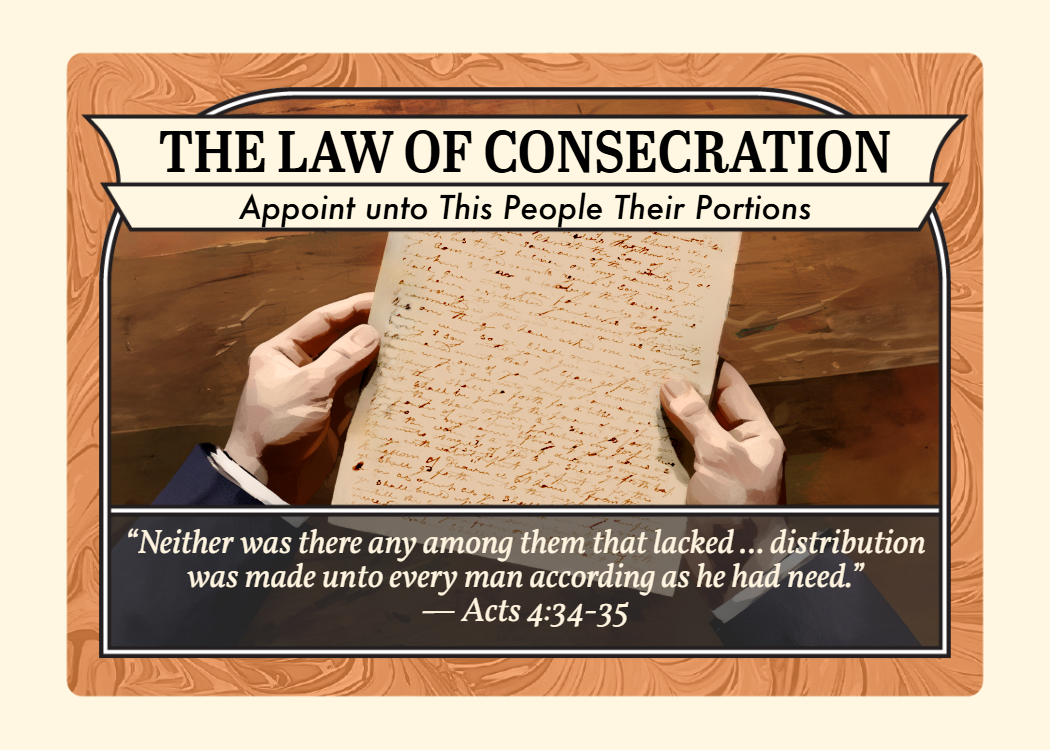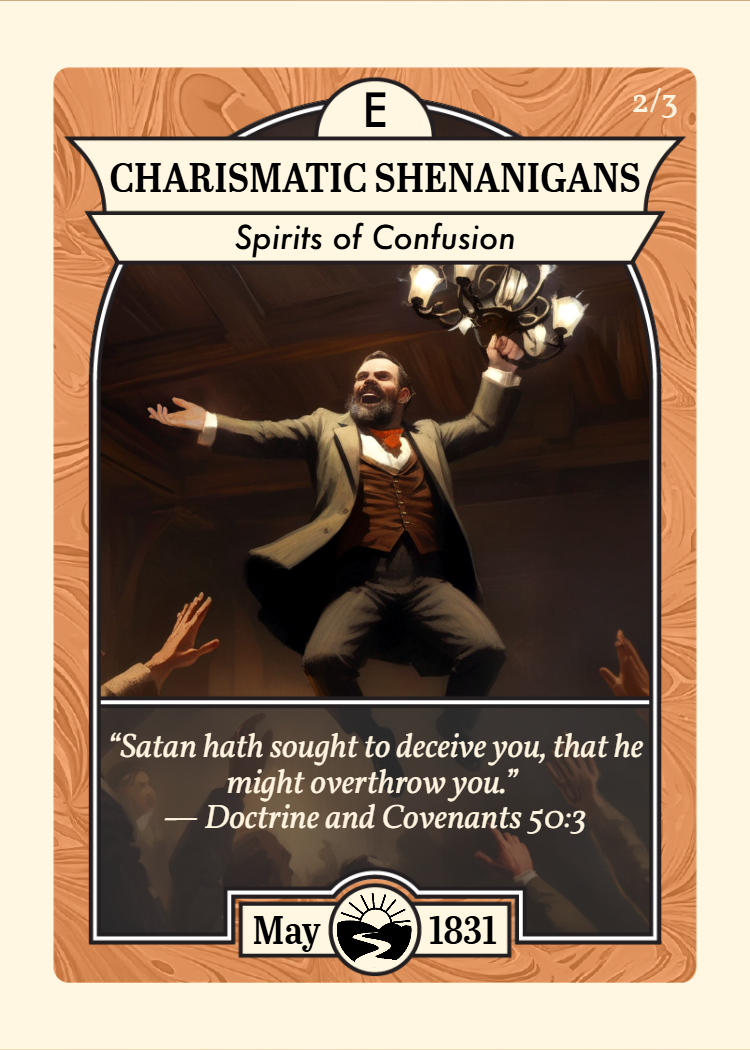When the early Saints gathered in Ohio, they were ready to build Zion—the pure in heart, gathered together, living like heaven on earth. It sounded glorious.
There was just one small complication: Zion was to be built by regular, imperfect people. People who still had old habits, personal quirks, and the occasional tendency to swing from the rafters (more on that in a minute).
Building a celestial society with mortals is messy work. But, what the early Kirtland Saints started—imperfectly and earnestly—we’re still trying to continue today.
Giving All to Build Zion: The Law of Consecration

In February 1831, Joseph Smith revealed what became known as the law of consecration, found today in Doctrine and Covenants 42.
The idea was simple: if everyone consecrated what they had, no one would go without. The law of consecration was patterned after the early Christians in Acts 4, where believers pooled their resources to ensure every need was met.
The Saints were asked to consecrate their property to the bishop, who would then assign stewardships based on each family's needs. It was different than early versions of a commune—it was a sacred trust system, where families still managed their own properties but remembered that everything ultimately belonged to the Lord.
Of course, knowing something is a good idea and actually living it are two different things. Even faithful Saints had to wrestle with old ideas about ownership, fairness, and fear of scarcity.
When Old Beliefs Met New Expectations: Leman Copley
![Church History Card titled Leman Copley – Seeking the Truth in Part, labeled “E” and numbered 1/3. It features a portrait of a solemn man in frontier-era clothing and a wide-brimmed hat, standing in a yellow field with cloudy skies behind him. The quote reads: “Leman... embraced the fulness of the everlasting gospel... but still [thought] that the Shakers were right in some particulars.” — Joseph Smith. The date listed at the bottom is 1831.](/cdn-cgi/image/f=auto,fit=scale-down,w=3840,h=1050/files/xBLNNg/img-2c737cf1-e5c5-438e-bcea-b0103e1909a5.png?t=eyJhbGciOiJkaXIiLCJlbmMiOiJBMjU2R0NNIn0..cgE-G9-EiD-YmtqH.jQtNTBg2tX5qM4zHeorMA0TNC-1iMVeGgW39sE7XP1_sbJkJ7EG9f-RIHCIAx-0Y1Bo9qTPRKBpOaeXiUemaSrpR02f-mFx1NjAlLVQWQV93OS1g9_eNTPzQMepMqgh7SoYg3Qj8dEdpTKGCw5SBq5o_xINqO3H33Udfru6fYXn6reVYoys7XbkQcUmei5PpurYu8UPr8FVI4yKhV07_MaUmipuhr5ktbCjCfFyJXDTV0Jz46B57PiPA59ROYWTi6ls4nD_rNIX31SLh5EQc96oTKod89xYiTv52PWUiJ4Wp-olmlghyiD0iiwQ_zU0yOkn-ENiXTYSu60uhtbHkMH35jZDkl_Jc15GDso9vqSp8dy-mBimkCxZ0ncbF3XfYa2pUy3nLLV2SNlprns_vjrTrbsU.q44BCEBDWCxXOuecMVryOg)
One man who got caught up in the challenges of consecration was Leman Copley, a successful Ohio farmer and a recent convert from the Shaker movement. Copley’s heart was in the right place (mostly). He offered his large farm to help the newly arrived Colesville Saints, who needed land and stability.
But old beliefs die hard. After an intense and somewhat disastrous mission to the Shakers (featuring Sidney Rigdon’s blunt sermons and Parley P. Pratt’s fiery rhetoric), Copley started second-guessing things. He withdrew his land offer and asked the Colesville Saints, who had just started putting down roots, to move along. Copley eventually drifted away from the Church altogether.
Sorting Spirit from Spectacle: Charismatic Shenanigans

Meanwhile, another challenge was unfolding: how to harness the Saints' spiritual enthusiasm without letting things spiral out of control.
Fresh from the emotional revivals of the Second Great Awakening, many early converts brought high-energy worship with them. Speaking in tongues, visions, swooning, rolling on the floor, swinging from rafters, and even pretending to wield the Sword of Laban—these were just a few highlights from early Church meetings.
While the Saints’ sincerity was real, Joseph Smith could see that not every spiritual manifestation was from God. Through revelations now found in Doctrine and Covenants 46 and 50, the Lord taught that spiritual gifts are real, but they must uplift, enlighten, and build up—not create confusion or chaos. Learn more (and get your own set of cards) at churchhistorycards.com.
Bonus Trivia
*Answers in footnotes
1. As directed in Doctrine and Covenants 42, who was responsible for managing consecrated property?[1]
A. Joseph Smith B. The apostles C. The bishop D. The Relief Society
2. What religious group was Leman Copley a part of before joining the Church of Christ?[2]
A. Methodists B. Baptists C. Shakers D. Quakers
3. Which sections of the Doctrine and Covenants provide criteria for discerning gifts of the Spirit?[3]
A. Sections 42 and 44 B. Sections 46 and 50 C. Sections 49 and 53 D. Sections 51 and 55


